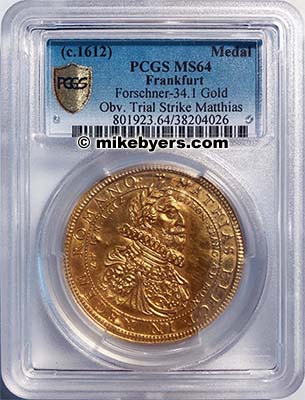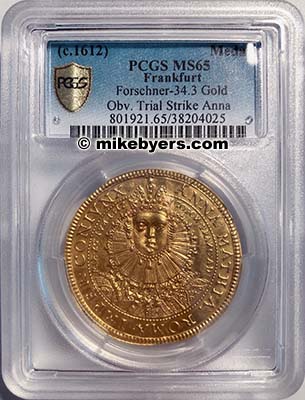Glossary
CategoriesBonded CoinsBroadstrikes Brockages Counterbrockages Die Adjustment Strikes Die Caps Die Trials Double Denomination Double/Multiple Strikes Dual Countries Dual Mint Marks Essay Trial Strikes Experimental Blanks Experimental Strikes Experimental Surface Feeder Finger Strikes Foreign Coins Struck on U.S. Planchets Galvanos Gold Die Trials Gold Errors Gold Off-Metals Hub Trials Indents Intentional Errors Martha Washington Test Pieces Mated Pairs Mules Multiple Errors Off-Centers Off-Metals Overstrikes Pattern Die Trials Pattern Errors Pattern Mules Plaster Models Platinum Errors Proof Errors SMS Mint Errors Specimens Spectacular Errors Struck Scrap Struck Thru Transitional Errors Two-Headed Coins Two-Tailed Coins Uncancelled Dies Uniface Die Trials Unique Coins |
  Gold Die TrialsMetals other than the adopted composition are frequently used to strike hub trials and die trials. They are sometimes struck in copper and white metal. Other times they are struck in softer metals like tin or lead. There are even some examples struck in wax and on cardboard. Die Trials that are struck in gold are exceeding rare. There is something really special about holding a gold die trial that is also uniface or on a larger planchet. This historical museum quality set of gold Coronation Die Trial Strikes was authenticated and certified by PCGS and is one of only two known sets. It is amazing that after 400 years, these gold Die Trials remained together, intact and preserved in gem mint state condition. They are both 5 Ducat size in diameter, 39 mm and 37 mm. |



